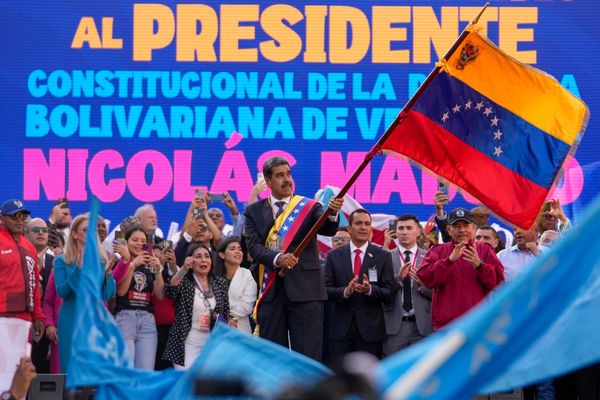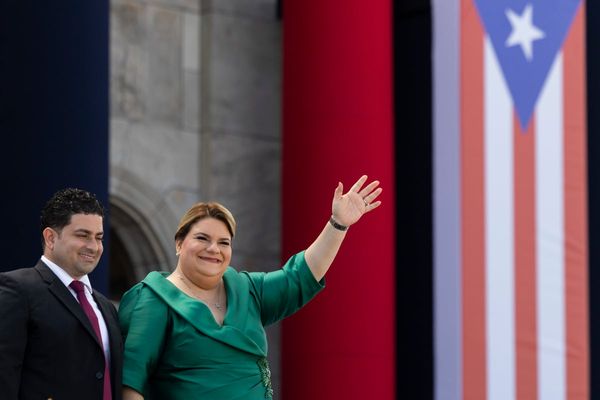
I saw a man cycling with a cricket bat on his back the other day. It was intriguing, given that I live in suburban Germany. A closer look revealed him to be an Indian man from my neighborhood. We know each other slightly.
He works for the sort of colossal German multinational that vacuums up talent without regard to nationality or border. He is from a small town in India that is larger than most German cities. His German is better than his English. We don’t speak of Indian politics because we suspect our views are wildly divergent. Our connection rests on a common passport and a love for a distant sport.
He stopped, politely. We asked each other the question Indians abroad do these past few weeks. India’s precipitous descent into COVID-19 hell is more than just a story for us.
“Everyone well back home?” We both answered in the affirmative, thankfully.
“Worrying.”
“Terrible.”
“What should we do?”
“What can we do?”
I asked him whom he’d played with. Only two adults from different households are allowed to exercise together. The weather was perfect, the late evening spring sun so brilliant: He had gone out with a friend, and they’d lobbed catches to each other. He’d worked up a sweat.
He had, for a moment, forgotten the context we are all living in.
And I’d just reminded him.
Shorn of rhetoric and obfuscation, it would seem that any nation’s approach to tackling COVID-19 is drawn from three things: restrictions, the endpoint of which is a hard lockdown; surveillance, which is of course linked to restrictions and runs the gamut from the United Kingdom’s Test and Trace system to China’s radically invasive monitoring; and, finally, a vaccine rollout.
My three countries—India, where I was born; China, where I lived from 2016 to 2019; and Germany, where I live now—have dealt with the pandemic in very different ways. Their respective successes and failures in using the three measures outlined above can help explain their hugely differing trajectories.
China is notable in that it conducted its so far successful strategy without a significant vaccine program. Its homegrown vaccines are of dubious efficacy, as a top public health official recently admitted. People are also less likely to opt for vaccines when they feel they aren’t threatened. It would seem that the very success with which China crushed COVID-19 has resulted in the relative failure of its vaccine rollout.
What the Chinese government does extremely well is restrictions and surveillance. Its people know this in their bones and just get on with it. The strategy was primarily reactive to begin with, a hammer taken to the problem at hand, most famously in Wuhan. But it evolved into something far more supple. Large city- and areawide lockdowns were swapped with targeted and strictly enforced restrictions to contain local outbreaks, and digital measures were quickly introduced that people had no choice but to comply with. It worked.
Down the line, however, if Chinese want to travel, they’re going to have to get vaccinated—with jabs that are acceptable to the rest of the world.
Germany’s experience of the pandemic has been very different. Clear communication, an implicit trust in government and its organs, and faith in scientific expertise characterized the early response. People got on board with the project of containing and defeating this new disease. The government was seen as being prescriptive rather than reactive and was thanked for it. However, that consensus has frayed noticeably over the past few months as the restrictions drag on and on.
The idea of surveillance is anathema to most Germans. Nazi strength grew in no small part from its intelligence organs, such as the Gestapo, and later, systemic surveillance by the Stasi and its affiliates in erstwhile East Germany left deep scars as well. Germans are suspicious of being watched and value their freedoms. Apps that monitor health and movement have foundered on the rock of data privacy.
The European Union has fumbled its vaccine rollout, it is safe to say. That story doesn’t need repeating. Better news has been trickling in of late, with herd immunity cited as being possible throughout the EU by mid-July.
As recent gatherings will attest, however, plenty of German residents don’t want to be vaccinated, restricted, or subjected to surveillance in any way at all. They have held marches all over Germany, some of which have descended into violence and have drawn a motley mix of far-righters, radical environmentalists, evangelicals, QAnon enthusiasts, and other so-called lateral thinkers who really should know better.
How much these freedom addicts are contributing to the recent spike in cases—and thus, inevitably, to further restrictions of everyone’s freedoms—is an open question, as is if they even believe that the pandemic actually exists or is just a giant hoax.
What is happening in India is something else entirely.
Recovery seems a distant prospect in India until this wave of infection literally burns itself out. The positivity rate, the number of positive results per total tests conducted, has gone from under 5 percent little more than a month ago to approaching 40 percent today. Labs can’t turn tests around fast enough.
The apparatus of the Indian state is clearly incapable of restricting the movements of its citizenry in any appreciable way. The vast internal migration that followed the first lockdown in late March 2020 is proof of that. The efforts it has made thus far have been ham-handed and must now ring hollow, given that the Hindu nationalist government led by the Bharatiya Janata Party (BJP) gave the nod to large-scale electioneering in the crucial state of West Bengal; it is currently ruled by an opposition party, the charismatic Mamata Banerjee’s Trinamool Congress, but is felt to be in play by the BJP. The government also allowed a huge Hindu religious gathering, the Kumbh Mela, to go ahead before it finally had to pull the plug.
India’s ability to monitor the health and movement of more than a billion people is more open to debate, but it is, as yet, unproven. Certainly its own ostensibly COVID-focused app, Aarogya Setu, has had a difficult first year. A citizenry mindful of its rights and skeptical of the government’s long-term plans for such a data-hungry platform, a lack of smartphone penetration, and general apathy: These have all been trotted out as reasons for the app’s shortcomings.
Which brings us to vaccines, the largest talking point. If you can’t test, trace, and isolate, if you can’t feasibly restrict movement, you must put jabs in arms as quickly as possible.
India is home to the world’s biggest vaccine-maker, the privately owned Serum Institute of India. It is manufacturing the AstraZeneca jab, part of its production earmarked for other poor countries under the COVAX initiative. More than 60 million doses were exported between January and March, the government smiling benignly at this soft-power opportunity, the numbers at home still miraculously, inexplicably keeping to their winter low. It has now hastily moved to claim all vaccines being made in India, however hard it is on other nations at risk of being as stricken in the near future as India now is.
With the situation as bad as it is, though, perhaps we can excuse India’s vaccine nationalism. Just this once.
Frustratingly, India remains primarily reactive. Indian states reported a shortfall of vaccines even before the May 1 rollout to all eligible adults. Adar Poonawalla, the CEO of the Serum Institute, has been asking the government for money for weeks in order to scale up production of the vaccine to meet skyrocketing demand. That request was only approved on April 19. While India waits for supply to ramp up, more and more states are saying they don’t have enough doses on hand, or even in the pipeline, to offer a jab to all adults on May 1.
Clearly the situation in India will get worse before it gets better. The impact of the new strains is being debated, with terms like “double variant” entering the everyday lexicon. I can feel the tension in the voices of my family and my friends. Numbers are bandied about until they mean nothing, infrastructural collapse now just part of the lay of the land. Ways to care for the sick at home are the currency of social media, where vaccine skepticism once ruled. Now nobody is speaking about not taking the vaccine.
“Delhi sounds like New York,” one of my oldest friends told me mordantly. Sirens wail through the night. It isn’t the soundtrack you want as you lie in bed trying to fall asleep.
Before I left China for Germany in 2019, I used to turn out for a cricket team made up of expats. I’ve still kept in touch with the other members. As the pandemic tightened its grip on Europe in late 2020, China’s path was a source of hope for those of us following the story. I watched in wonder—and more than a little envy—as my old teammates got together for nets, 20 players lining up to practice in close proximity as Europe’s restrictions hardened ever further.
Then India stumbled as the April harvest of 2021 approached. Around that time, my old team, with its subcontinental contingent, traveled from Beijing to Shenzhen to play a tournament. The revelry was painstakingly documented on social media. It was surreal to see people drinking beers, lazing in the sun after a hard night out, just being social, while my other two countries struggled to cope—Germany with its interminable and increasingly contested lockdown, India with its suddenly vertical graphs on every indicator.
An Indian friend in Beijing hasn’t seen his wife and child in a year. They escaped Beijing last year while they could, when it seemed the coronavirus was only a Chinese problem. The closing of the country’s borders and the halting of commercial flights between India and China kept them out subsequently. Now they’re stuck in India—with every new announcement of another travel ban a further confirmation that the country of my birth is effectively an international pariah.
My friend’s life in China is back to normal in most aspects. But how normal can life be when your family isn’t with you?
A global reckoning with the pandemic is what the world needs. As Tedros Adhanom Ghebreyesus, the director-general of the World Health Organization, put it, “No one is safe until everyone is safe.” As with people, so too with the nations they live in: The pandemic needs to be controlled everywhere before anywhere can truly be considered free of it.
But that day seems no closer than it was a year ago.







